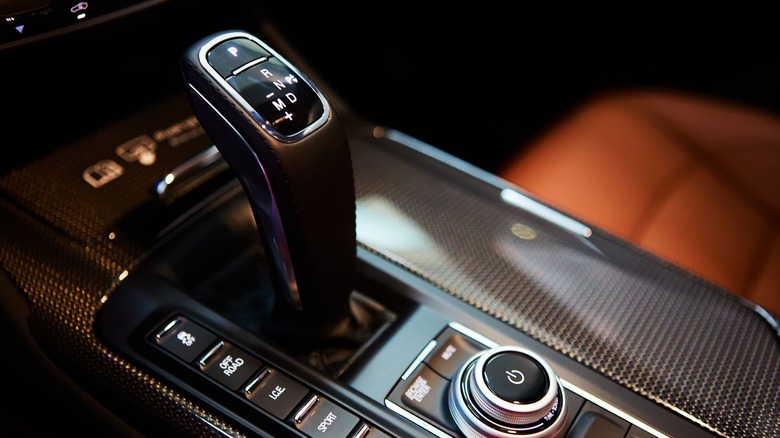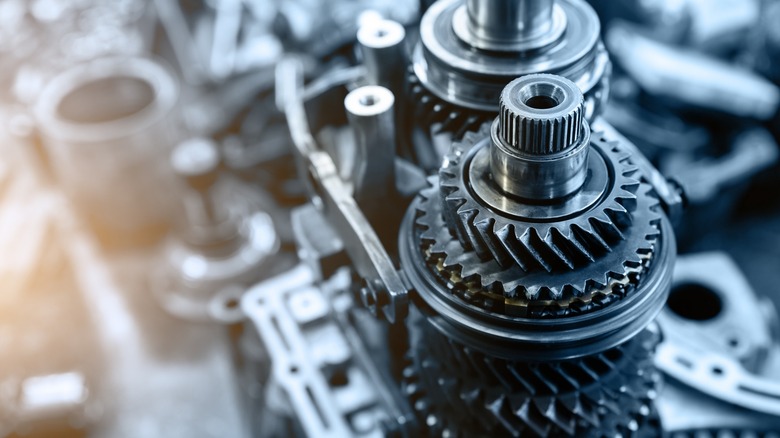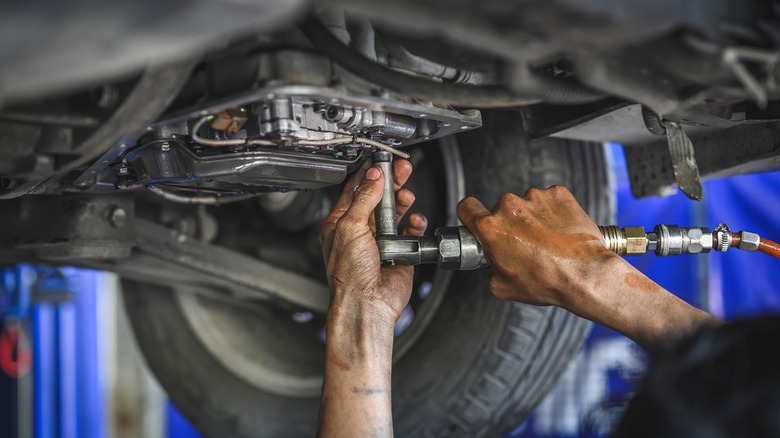Here's How An Automatic Transmission Works
Though the pandemic may have reduced the amount of time we spend in our vehicles, we still rely on these mechanical beasts to get us from point A to point B. Whether you're participating in ridesharing or taking shorter, more objective-driven drives and have long since said goodbye to the joyride, cars themselves haven't fundamentally changed and may still play an important role in your life.
So, isn't it about time you understood what's happening under the hood of your primary means of transportation? If not to prepare yourself in the event of a mechanical failure, at least to have knowledge of the rather powerful (and potentially dangerous) four-wheeled goliath you guide down congested roadways.
Under the hood of your car are a number of tubes, wires, and components that work together to propel the car forward. One of the most important pieces of the puzzle is the automatic transmission, which is part of the vehicle's drivetrain. You may have heard that the engine is the heart of the car, but without the transmission, that beating heart would serve no purpose. Let's take a moment to explore the inner workings of your car and see how the automatic transmission, a crucial part of what propels the vehicle forward, works.
What purpose does a transmission serve?
When shopping for a vehicle, you'll hear terms like manual, automatic, and continuously variable (CVT), all pertaining to the type of transmission found under the hood. Automatic tend to be the most popular because they offer the most comfortable and easiest drive. Unlike a manual transmission, drivers don't have to worry about shifting gears mid-drive, but they also don't lose that gentle physical jolt that occurs when an automatic transmission changes gears as one does with a CVT.
Regardless of the type of transmission you're most comfortable with, though, they all pretty much do the same thing. As the car's engine produces power, it needs a way to distribute some of that to the wheels of the car to propel the vehicle forward. That's where the transmission comes in. As the name implies, it transmits power to the rest of the drivetrain, which includes parts associated with the wheels, like the wheels themselves, axles, and driveshaft.
But what, exactly, does that mean? What is an automatic transmission doing under the hood, and how does it work with the other drivetrain components to move the car forward?
How does an automatic transmission work?
The automatic transmission is made up of three parts: the torque converter, the planetary gears, and the brake bands and clutches. As the engine runs, it spins the torque converter's impeller, which is composed of tilted blades that, when spinning fast enough, push transmission fluid into the turbine. As this fluid hits the turbine, causing it to turn, it activates the transmission shaft and pump, which circulates the fluid back to the impeller through the turbine. This process continues in a cycle to prevent the car from stalling until you put it into drive. At that point, unless you have your foot on the brake, the build-up of torque from the cyclical fluid dynamics pushes the car forward.
The process could end there, but then your car would hit a very limited top speed and cruise along slowly. As we need to increase speed, the inner workings of the automatic transmission do so incrementally through a planetary gear system. When you increase your speed, hydraulics within the transmission activate the gearset, shifting between different gear ratios to properly distribute the necessary amount of power to the wheels.
Many moons ago, this was a much more complicated and mechanical process. Still, as computers became commonplace, they took over gauging when gears needed to be changed and running the various components of an automatic transmission.
Caring for your automatic transmission
As you can gauge, the transmission is one of the most important components of your vehicle, meaning you'll want to perform routine maintenance to ensure it runs properly. Since the mechanics of your transmission rely heavily on fluid, you'll want to check it at least with every oil change. Generally, transmission fluid has a reddish hue and a sweet smell. If it's more brown and has an off-putting or plain scent, it's time for a change.
According to manufacturers, your transmission system should be flushed at least every 30,000 miles. Some state you can push it to 100,000, but it's best to have a manufacturer's technician determine if your transmission needs a flush, as higher levels of activity in a short span of time may cause the fluid to get dirtier quicker. When a system is flushed, replace all fluid and clean components to maximize efficiency.
If you're driving a newer vehicle, keeping up on your transmission maintenance is even more important, as poor upkeep can void the warranty, leaving you with costly repairs.



